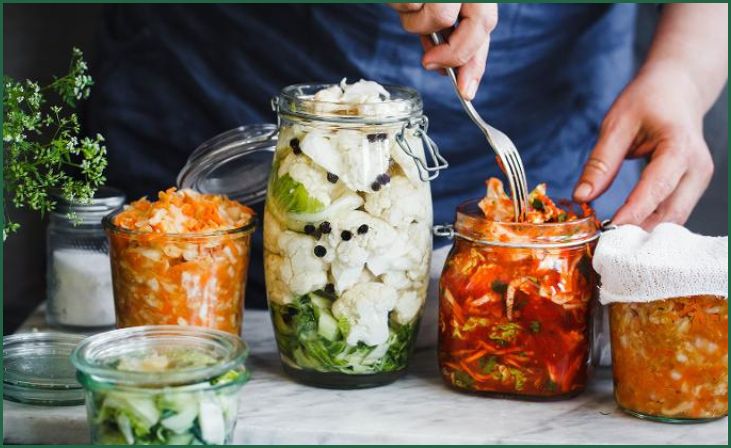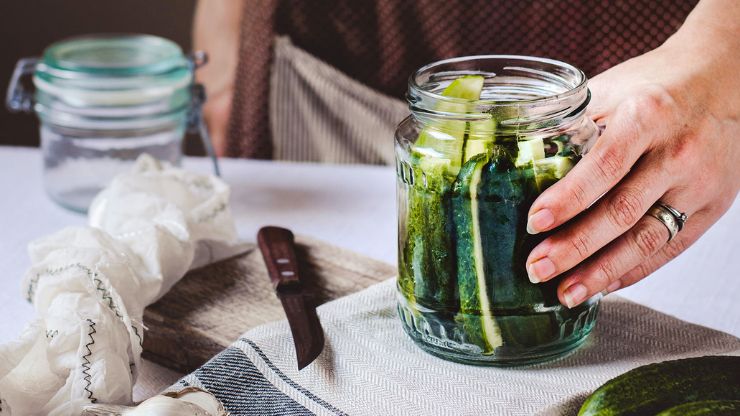Do you have to Sterilize your Fermenting Jars? – Are you delving into the world of fermentation and wondering about the necessity of sterilizing your fermenting jars? This blog will demystify the process, addressing common concerns and providing insights into whether sterilization is a crucial step in your fermenting journey.
Table of Contents
ToggleDo you have to sterilize your fermenting jars?

When venturing into the world of fermentation, the decision to sterilize your fermenting jars depends on various factors. While it’s not always mandatory, proper cleaning is essential. Sterilization can offer an extra layer of protection against unwanted microorganisms, ensuring a smoother fermentation process and better results. Evaluate your specific circumstances and preferences to find the right balance for your fermenting endeavors.
Cleaning vs. Sterilizing
In the realm of fermenting, understanding the distinction between cleaning and sterilizing is crucial. Cleaning focuses on removing visible dirt, ensuring a basic level of hygiene. On the other hand, sterilizing takes it a step further by eliminating harmful microorganisms that may compromise your ferment.
While thorough cleaning is a must, the decision to sterilize depends on factors such as the type of ferment and your environment. Striking the right balance between cleaning and sterilizing is key to fostering a healthy fermentation process. Consider your specific circumstances to determine the most suitable approach for optimal results.
Also Read: How to Safely Store Fermented Foods
Pros and Cons of Sterilization
Pros and Cons of Sterilizing Fermenting Jars
Pros
- Enhanced Microbial Control: Sterilizing effectively eliminates harmful bacteria and wild yeast, providing a clean slate for your desired fermentation cultures. This control minimizes the risk of unwanted microorganisms interfering with the fermentation process.
- Consistent Results: Sterilization contributes to more predictable and consistent fermentation outcomes. By creating an environment free of competing microorganisms, you increase the likelihood of achieving the desired flavors, textures, and aromas in your ferments.
- Extended Shelf Life: A sterile environment reduces the chances of spoilage, contributing to longer shelf life for your fermented products. This is particularly beneficial if you plan to store or share your creations over an extended period.
- Versatility Across Ferments: Sterilizing is recommended for a wide range of ferments, making it a versatile practice that can be applied to various recipes. It provides a universal solution to maintaining the purity of different fermentation projects.
Cons
- Time and Effort: Sterilizing adds an extra step to the fermentation process, demanding more time and effort. This may be a consideration, especially for those seeking a more straightforward approach to home fermentation.
- Potential for Overkill: In some cases, excessive sterilization may remove beneficial microbes that contribute to the unique characteristics of certain ferments. Striking a balance between cleanliness and preserving the desired microorganisms is essential.
- Environmental Impact: Sterilization often involves the use of additional resources such as energy and water. This may be a concern for those aiming to minimize their environmental footprint in their fermentation practices.
- Learning Curve: For beginners, the concept of sterilization might be intimidating or seem overly complex. However, with experience and understanding, the process becomes more manageable.
In summary, while sterilization offers significant advantages in terms of microbial control and consistent results, it comes with considerations of time, environmental impact, and the potential loss of beneficial microbes. Finding the right balance based on your specific fermenting goals and preferences is key to a successful and enjoyable fermentation journey.
Also Read: Fermenting Weight
Factors Influencing the Decision

Factors Influencing the Decision on Sterilizing Fermenting Jars
Type of Ferment
Different ferments have varying susceptibility to contamination. For projects like sauerkraut or kimchi, where beneficial lactic acid bacteria dominate, rigorous sterilization might be less critical. However, for more delicate ferments like certain sourdough starters or kombucha, a sterile environment can be more beneficial.
Don't just scroll, subscribe!
BuzzTrail's unique web-stories are the cure for boredom you've been waiting for.
Environmental Factors
The cleanliness of your fermentation environment plays a crucial role. If you’re fermenting in a space prone to dust, mold, or fluctuating temperatures, the risk of contamination increases. In such cases, opting for sterilization provides an extra layer of protection.
Duration of Fermentation
The length of your fermentation process matters. Shorter fermentations may be less affected by unwanted microorganisms, making sterilization less imperative. Longer ferments, on the other hand, provide more time for contaminants to impact the outcome, making sterilization a prudent choice.
Personal Preferences
Your personal tolerance for risk and your desired level of control over the fermentation process influence the decision to sterilize. If you prioritize convenience and are comfortable with a slightly higher risk of contamination, thorough cleaning may be sufficient.
Previous Experiences
Your past experiences with fermentation projects can shape your approach. If you’ve encountered issues with contamination before, you might lean towards more rigorous sterilization. Conversely, successful fermentations with minimal sterilization might boost your confidence in a less intensive approach.
Recipe Specifics
Some recipes explicitly recommend or discourage sterilization based on the fermentation requirements. Follow the guidelines provided with your specific recipe to determine the best approach for achieving the intended flavors and characteristics.
Frequency of Fermentation
Consider how often you engage in fermentation. If it’s a regular activity, you might develop a routine that balances efficiency with the need for a sterile environment. Infrequent fermenters might be more inclined to invest extra time and effort into sterilization.
Available Resources
The resources at your disposal, such as time, energy, and equipment, influence your decision. Sterilization can be more demanding in terms of time and resources, so assess what you’re willing and able to commit to the process.
Also Read: Fermenting in Hot Weather
In conclusion, the decision to sterilize your fermenting jars is influenced by a combination of the type of ferment, environmental conditions, personal preferences, past experiences, recipe guidelines, frequency of fermentation, and available resources. Considering these factors collectively will help you tailor your approach to achieve successful and enjoyable fermentation outcomes.
Conclusion
In the realm of fermenting, the choice to sterilize your jars depends on factors like the type of ferment, your cleanliness practices, and desired outcomes. Striking the right balance between cleaning and sterilizing ensures a smooth fermentation process, allowing you to savor the delightful results of your homemade fermented food. Cheers to your fermenting adventures!
FAQs
Do I really have to sterilize my fermenting jars?
Do I really have to sterilize my fermenting jars?
While sterilization is often recommended for optimal results, it’s not always mandatory. Proper cleaning and sanitation can suffice in many cases. However, sterilizing your fermenting jars can minimize the risk of unwanted bacteria interfering with the fermentation process, ensuring a successful batch.
What’s the difference between cleaning and sterilizing?
What’s the difference between cleaning and sterilizing?
Cleaning removes visible dirt, while sterilizing goes a step further by eliminating harmful microorganisms. Cleaning is a must, but depending on the type of ferment and your environment, sterilization may or may not be necessary. Assess your circumstances to strike the right balance between convenience and a healthy fermentation.

